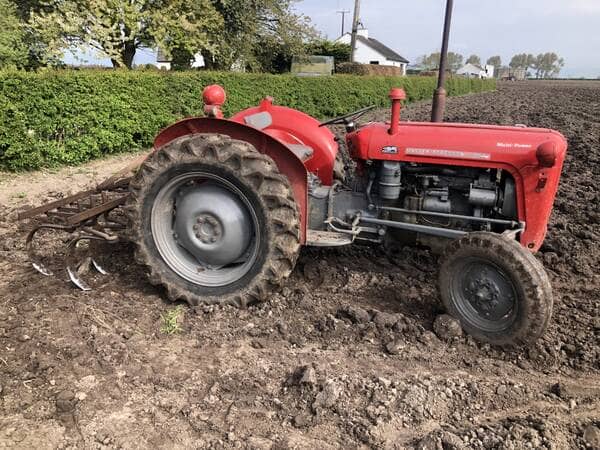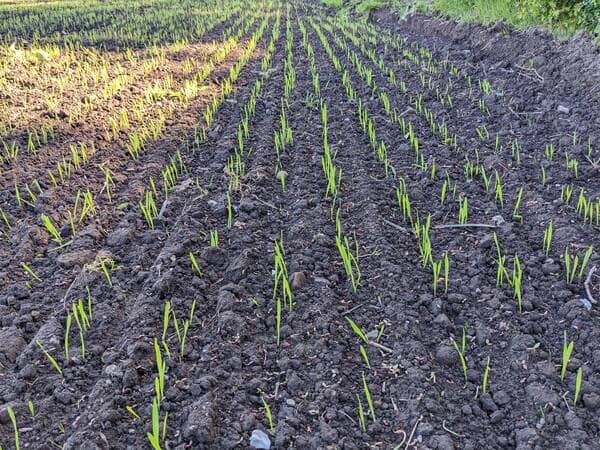Welcome to another post here at GrowerExperts, where we offer comprehensive advice to help you maximize your yield. Today, we’re delving into an essential topic for all growers: the ideal soil moisture level for ploughing. Understanding this aspect can make a significant difference in your crop’s health and productivity. So, let’s dig in!
Understanding Ploughing
Before we delve into the specifics of soil moisture, let’s first understand what ploughing is and why it’s crucial. Ploughing is a farming practice where the soil is turned over to prepare a new planting surface. This process aids in soil aeration, weed control, and breaking down crop residues.
You can find a more detailed explanation of ploughs and their operation in this article.
The Importance of Soil Moisture in Ploughing
So, why does soil moisture matter when ploughing? Well, soil moisture affects how easily the soil can be turned and the condition it’s left in after ploughing. It impacts the soil structure, its ability to hold nutrients, and ultimately, the health and productivity of your crops.
1. Soil Structure and Composition
The moisture content of soil can significantly influence its structure and composition. Soil particles stick together in different ways depending on the level of moisture present. Proper moisture content can help maintain a good soil structure with the right balance of air spaces and particles, critical for root growth and nutrient absorption.
2. Ease of Ploughing
Soil that’s too dry can be hard and difficult to break up, making the ploughing process laborious and potentially damaging to machinery. On the other hand, soil that’s too wet can be sticky and heavy, leading to compaction, which can be equally challenging for farm equipment.
3. Soil Erosion
Moisture content plays a significant role in soil erosion. Dry, loose soil is more susceptible to wind erosion, while overly wet soil can contribute to water erosion. Ploughing at the right moisture level can help minimize both types of erosion.
4. Seedbed Preparation
5. Nutrient Availability and Uptake
Soil moisture affects the availability and uptake of nutrients. Wet soils can become compacted, reducing the oxygen level and leading to the loss of nitrogen through a process called denitrification. On the other hand, dry soils might not have sufficient water for the movement of nutrients to the plant roots.
6. Impact on Soil Microorganisms
Soil moisture also impacts the health and activity of soil microorganisms, which are vital for nutrient cycling and organic matter decomposition. Both overly dry and overly wet conditions can harm these microorganisms, disrupting essential soil processes.
The Effects of Ploughing Wet Soil
For more information on soil compaction, please check our article What causes soil compaction?
The Effects of Ploughing Dry Soil
On the other hand, ploughing when the soil is too dry has its challenges. Dry soil can create dust, which is not only a health hazard but can also lead to soil erosion. Additionally, dry soil can be hard and clumpy, making it difficult to achieve a good seedbed.
How to Determine the Right Soil Moisture for Ploughing
Now that we understand why soil moisture is important, how can we determine the right moisture content for ploughing? One straightforward method is the feel method: simply take a handful of soil and squeeze it. If it forms a ball and doesn’t crumble when poked, it’s too wet. If it doesn’t form a ball, it’s too dry. The soil is just right if it forms a ball that crumbles when poked. This, of course, may vary depending on your soil type.
Best Practices for Ploughing Based on Soil Moisture
Here are some best practices for ploughing based on soil moisture:
- If the soil is too wet, it’s best to wait until it dries out a bit. Ploughing wet soil can cause more harm than good.
- If the soil is too dry, you might need to wait for rain or irrigate before ploughing. However, be careful not to over-irrigate as this can lead to the problems associated with wet soil.
- Always monitor the weather. If heavy rain is expected, it might be better to delay ploughing.
- Try to maintain consistent soil moisture throughout your field. This consistency can lead to better ploughing results and, subsequently, better yields.
Summary
Understanding and managing soil moisture is key to successful ploughing and, ultimately, healthy and productive crops. By ensuring that your soil is at the right moisture level before ploughing, you can help maintain good soil structure, prevent erosion, prepare a quality seedbed, and promote nutrient availability and the health of soil microorganisms.
further reading:
The Tractor Ploughing Manual, 2nd Edition: The Society of Ploughmen Official Handbook (Old Pond Books) Types of Ploughs, Competitions, Over 150 Photographs Showing Good Practices and Faults, and More by Brian Bell. Author Brian Bell lives in Suffolk where he was formerly Vice Principal of Otley College. He has written over 25 books and DVDs on farm machinery and contributes to several specialist magazines. He has been awarded the MBE for his services to agriculture.



